Top 3 Longest Rivers in the World – Rivers have been vital to human civilization since ancient times, providing water for drinking, irrigation, transportation, and trade. They have also played an important role in shaping the natural landscape and supporting a rich diversity of plant and animal life. In this article, we’ll take a closer look at the three longest rivers in the world, each of which spans thousands of miles and encompasses a variety of unique features and cultural significance. From the lush jungles of South America to the arid deserts of Africa and beyond, these rivers represent some of the most awe-inspiring natural wonders on our planet.
Table of Contents
1. River Nile
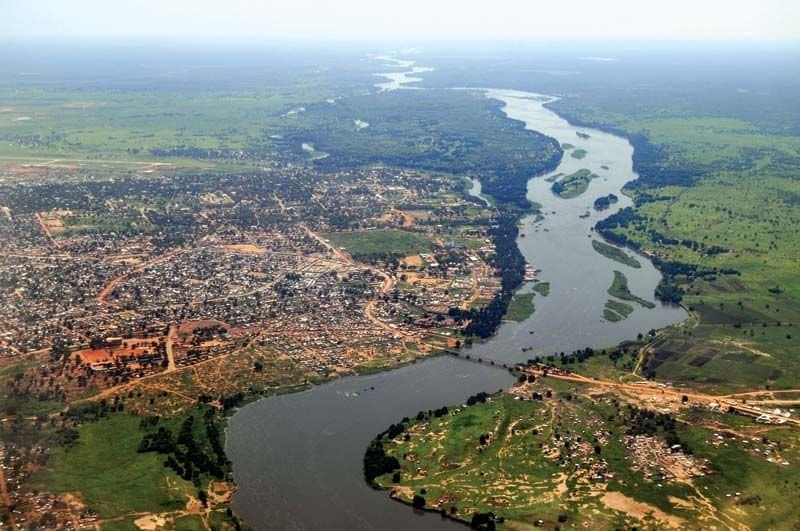
The Nile River: A Symbol of Life and Civilization
The Nile River is the longest river in the world, spanning approximately 4,135 miles from its source in the highlands of East Africa to its mouth at the Mediterranean Sea. It is a river that has captured the imaginations of people for centuries, and has played a significant role in the development of human civilization in Africa.
The Nile River has two main tributaries, the White Nile and the Blue Nile, which converge in Sudan before flowing northwards towards Egypt. The river is a lifeline for millions of people who depend on it for water, food, transportation, and power generation. It is also home to a rich diversity of plant and animal life, and has a cultural and spiritual significance for many communities.
The Nile River has a long and fascinating history. The ancient Egyptians, who lived along the river, saw it as a symbol of life and fertility, and believed that the annual flooding of the Nile was a gift from the gods. The Nile provided the water and fertile soil needed to grow crops, and was therefore the foundation of Egyptian civilization.
Over the centuries, the Nile has played a role in many key events in African history. It was a major trade route for ancient civilizations, connecting Egypt with the rest of the continent. The Nile also played a key role in the development of Islam in Africa, with Muslim traders and scholars traveling along the river to spread their faith and knowledge.
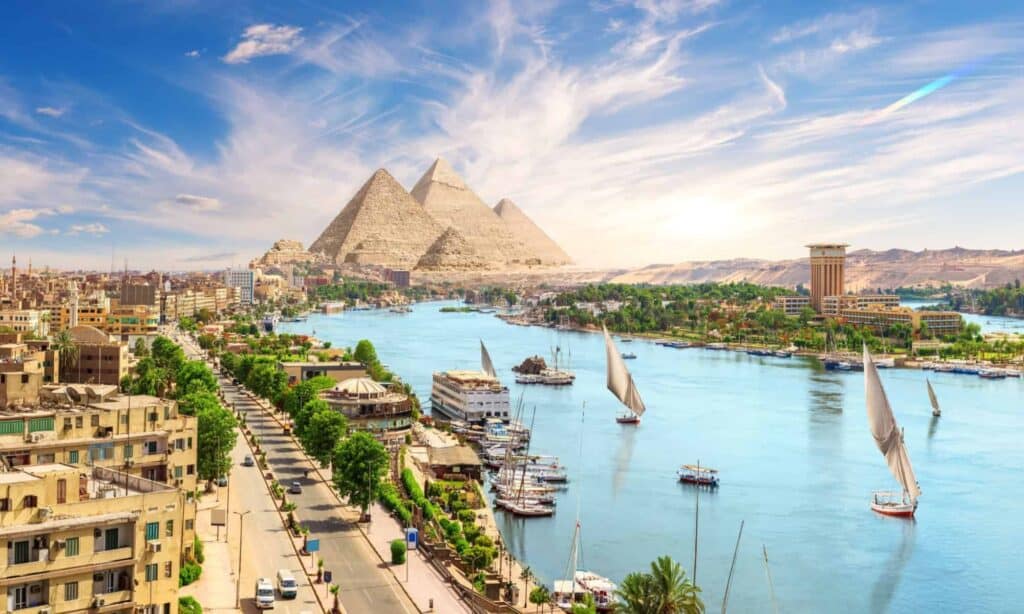
In the 19th and 20th centuries, the Nile became a focal point of European imperialism, with various colonial powers vying for control over the river’s resources. This led to the construction of large dams and other infrastructure projects, which had significant environmental and social impacts on the river and its surrounding communities.
Today, the Nile River remains an important source of life and livelihood for millions of people in Africa. It is also facing new challenges, including population growth, climate change, and political tensions between upstream and downstream countries. However, efforts are being made to manage the river’s resources in a sustainable and equitable manner, and to ensure that the Nile continues to be a symbol of life and civilization for generations to come.
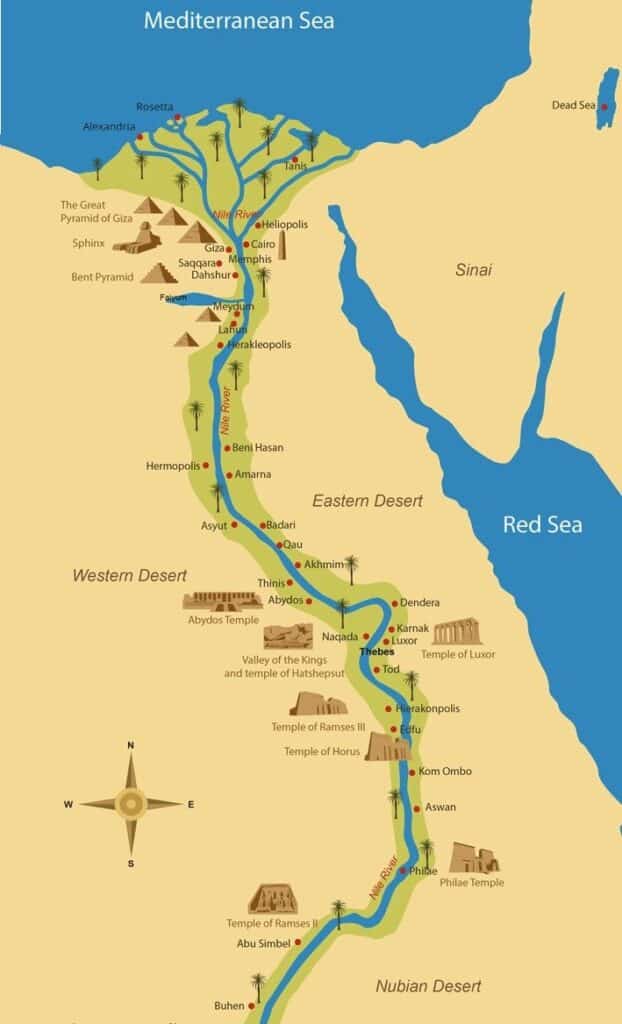
Fun Facts about the Nile River :
- The Nile River is the longest river in the world, stretching over 4,000 miles.
- The river is home to over 100 species of fish, including the Nile perch, which can weigh over 400 pounds.
- The ancient Egyptians believed that the Nile River was created by the tears of the goddess Isis.
- The Nile River delta is one of the most fertile regions in the world, and is known as the “breadbasket of Egypt.”
- The Nile River has two main tributaries: the White Nile, which originates in the highlands of East Africa, and the Blue Nile, which begins in Ethiopia.
- The Nile River is surrounded by a variety of wildlife, including crocodiles, hippos, and over 350 species of birds.
- The Nile River played a key role in the development of ancient Egyptian civilization, providing water for irrigation, transportation, and trade.
- The Nile River is known for its annual flooding, which deposits nutrient-rich silt along its banks and helps to fertilize crops.
- The Nile River was a major trade route for ancient civilizations, connecting Egypt with other parts of Africa and the Mediterranean world.
- The Nile River is the primary source of water for over 300 million people living in 11 different countries.
2. Yangtze River
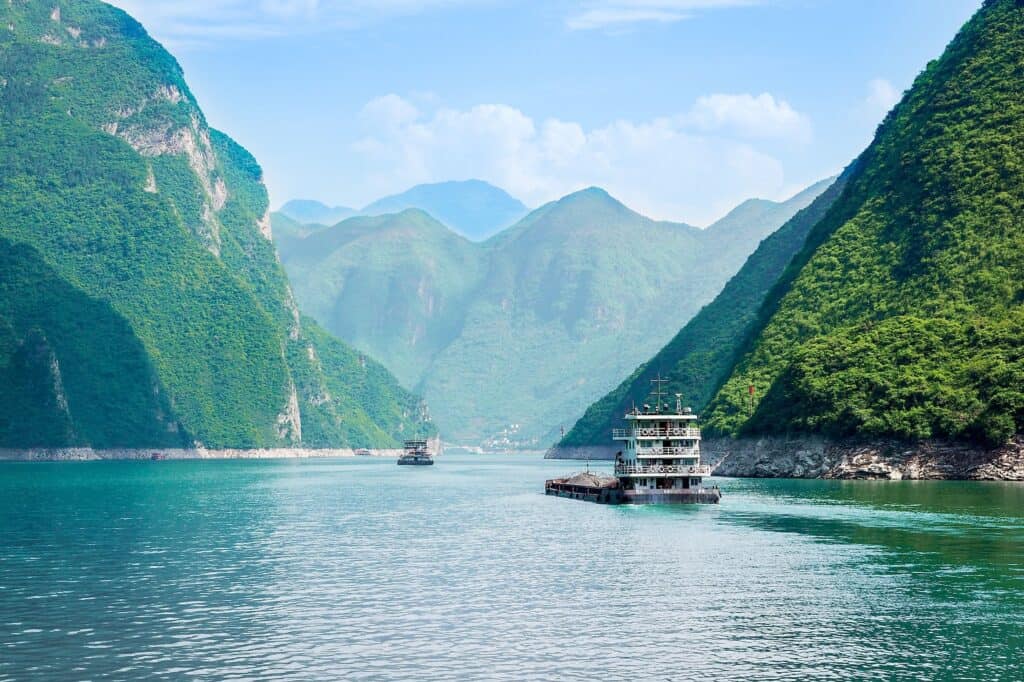
The Yangtze River: China’s Longest and Most Iconic Waterway
The Yangtze River is the longest river in China and the second longest river in the world, stretching over 3,900 miles from its source in the Tibetan Plateau to its mouth at the East China Sea. It is a river that has played a vital role in the development of China’s civilization, culture, and economy for over 5,000 years.
The Yangtze River has its source in the high-altitude glaciers of the Tibetan Plateau, and flows eastwards through several provinces of China, including Sichuan, Yunnan, Hubei, and Jiangsu. The river is a major transportation route for goods and people, and is home to several of China’s largest cities, including Shanghai, Chongqing, and Wuhan.
The Yangtze River has a rich and complex history. It has been a source of inspiration for poets, painters, and writers throughout Chinese history, and has played a key role in many of China’s major historical events. The river has been the site of numerous battles and conflicts, including the Three Kingdoms period, the Taiping Rebellion, and the Second Sino-Japanese War.
The Yangtze River is also home to some of China’s most iconic cultural and historical landmarks. The Three Gorges, located in the middle reaches of the river, are renowned for their natural beauty and cultural significance. The river is also home to the ancient city of Nanjing, which served as China’s capital during several dynasties, and the famous Yellow Crane Tower, a cultural symbol of Wuhan city.
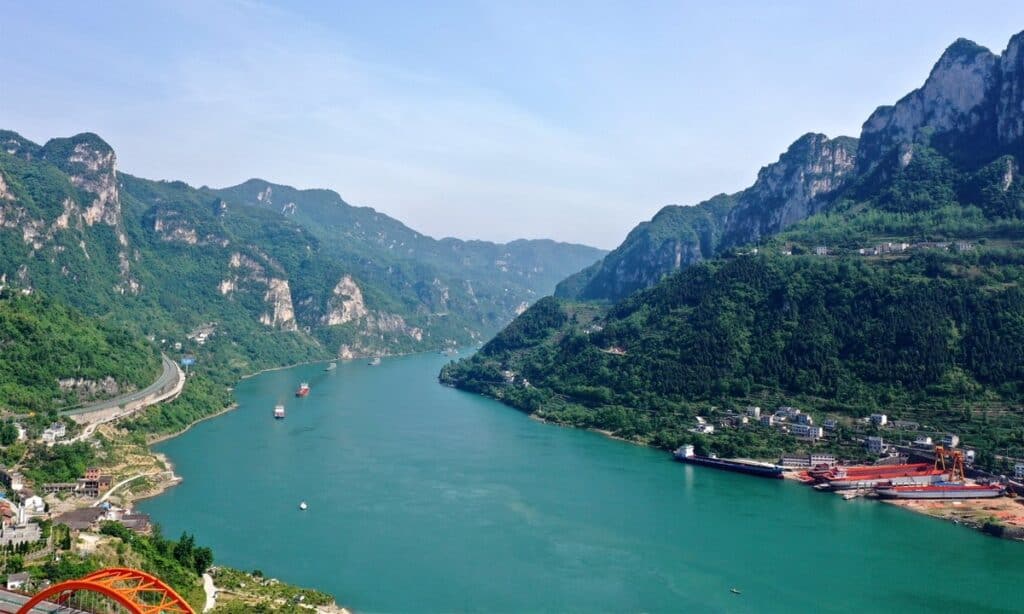
Over the centuries, the Yangtze River has undergone significant changes due to human activities. The river has been dammed and diverted for various purposes, including hydroelectric power generation, flood control, and irrigation. These projects have had significant environmental and social impacts on the river and its surrounding communities.
Today, the Yangtze River is a critical component of China’s economy, providing water and transportation services for millions of people. Efforts are being made to balance economic development with environmental conservation and sustainable management of the river’s resources, so that the Yangtze can continue to be a source of pride and inspiration for the Chinese people for many years to come.
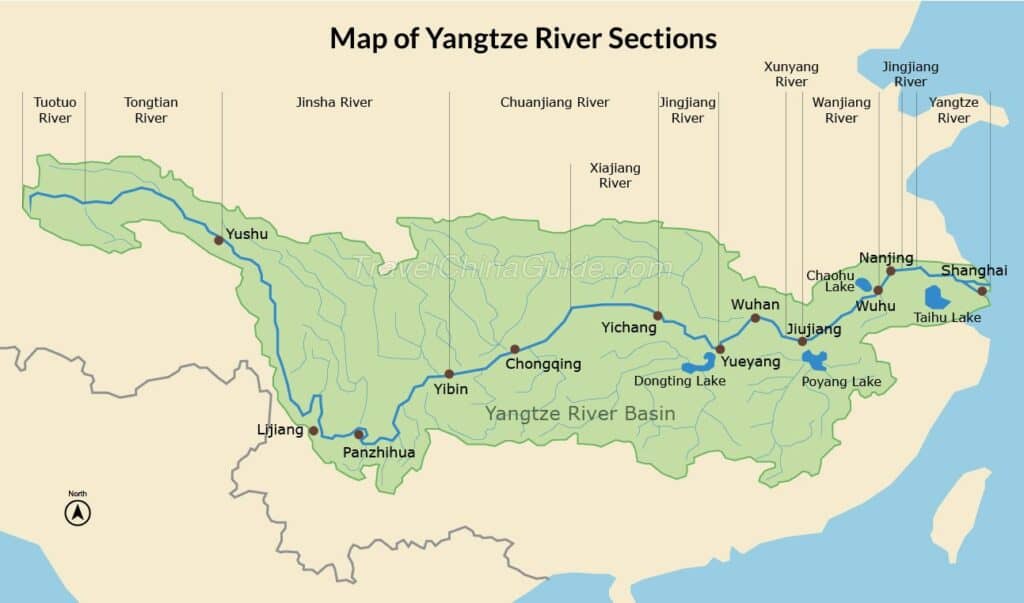
Fun Facts of Yangtze River:
- The Yangtze River is home to over 400 species of fish, including the Chinese sturgeon, which is one of the largest freshwater fish in the world.
- The river is also home to the critically endangered Yangtze river dolphin, or Baiji, which was declared functionally extinct in 2006.
- The Yangtze River is known for its stunning scenery, including the Three Gorges, a series of three steep-sided canyons that stretch over 120 miles and feature spectacular natural beauty.
- The Yangtze River is also home to several historical and cultural landmarks, including the ancient city of Nanjing, the Yellow Crane Tower in Wuhan, and the Three Gorges Dam, which is one of the largest hydroelectric power stations in the world.
- The Yangtze River is known for its unpredictable flooding, which has caused significant damage and loss of life throughout history. The 1998 Yangtze River floods were one of the most devastating natural disasters in modern Chinese history, affecting over 230 million people and causing over 4,000 deaths.
3. The Mighty Mississippi
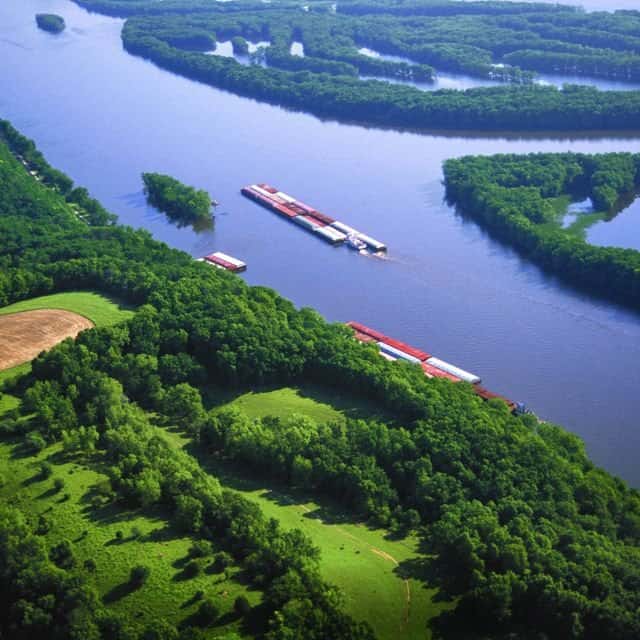
The Mighty Mississippi: A River of History and Power
The Mississippi River is the third longest river in the world, stretching over 2,300 miles from its source in Minnesota to its mouth at the Gulf of Mexico. It is a river that has played a vital role in the history, culture, and economy of the United States, shaping the landscape and the lives of millions of people.
The Mississippi River has its source in Lake Itasca in northern Minnesota, and flows southwards through several states, including Wisconsin, Iowa, Illinois, Missouri, Kentucky, Tennessee, Arkansas, Mississippi, and Louisiana. The river is a major transportation route for goods and people, and is home to several of the largest cities in the United States, including Minneapolis, St. Louis, Memphis, and New Orleans.
The Mississippi River has a rich and complex history, dating back to the earliest Native American civilizations. The river served as a vital trade route for the indigenous peoples of the region, who traveled up and down the river to trade goods and share cultural ideas.
In the 17th and 18th centuries, European explorers and colonizers began to explore and settle the regions surrounding the Mississippi River. The river played a key role in the development of the French and Spanish colonies in the Mississippi Valley, and later became a major component of the American frontier.
During the 19th century, the Mississippi River became an important transportation route for goods and people, as steamboats began to navigate its waters. The river also played a key role in the American Civil War, with numerous battles and skirmishes taking place along its banks.
The Mississippi River is also home to some of the most iconic landmarks and cultural institutions in the United States. The Gateway Arch in St. Louis, the French Quarter in New Orleans, and the Mark Twain Boyhood Home and Museum in Hannibal, Missouri, are just a few examples of the many historical and cultural sites that can be found along the river.
Today, the Mississippi River is a critical component of the United States’ economy, providing water and transportation services for millions of people. The river is also a source of recreation, with millions of visitors enjoying boating, fishing, and other activities along its banks each year.
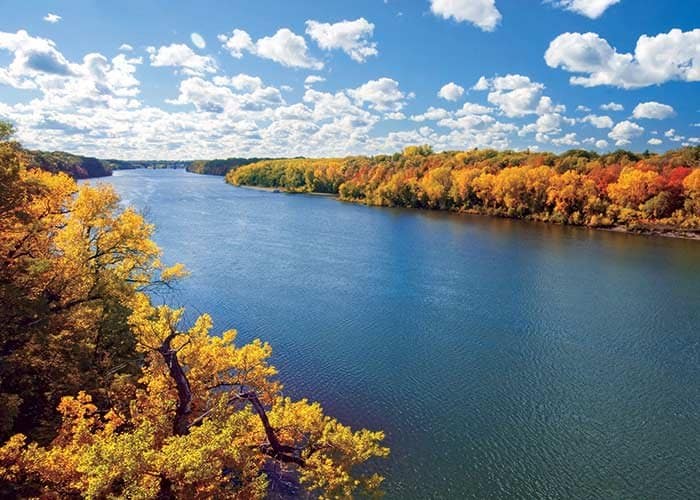
The Mississippi River is not without its challenges, however. The river is prone to flooding, which can cause significant damage to homes and infrastructure along its banks. In recent years, efforts have been made to mitigate the impact of flooding through improved engineering and flood control measures.
The Mighty Mississippi has played a significant role in the history and culture of the United States, and continues to be a powerful force shaping the lives of millions of people. Whether you’re interested in history, culture, or the natural world, there’s something for everyone to discover along the banks of this iconic river.
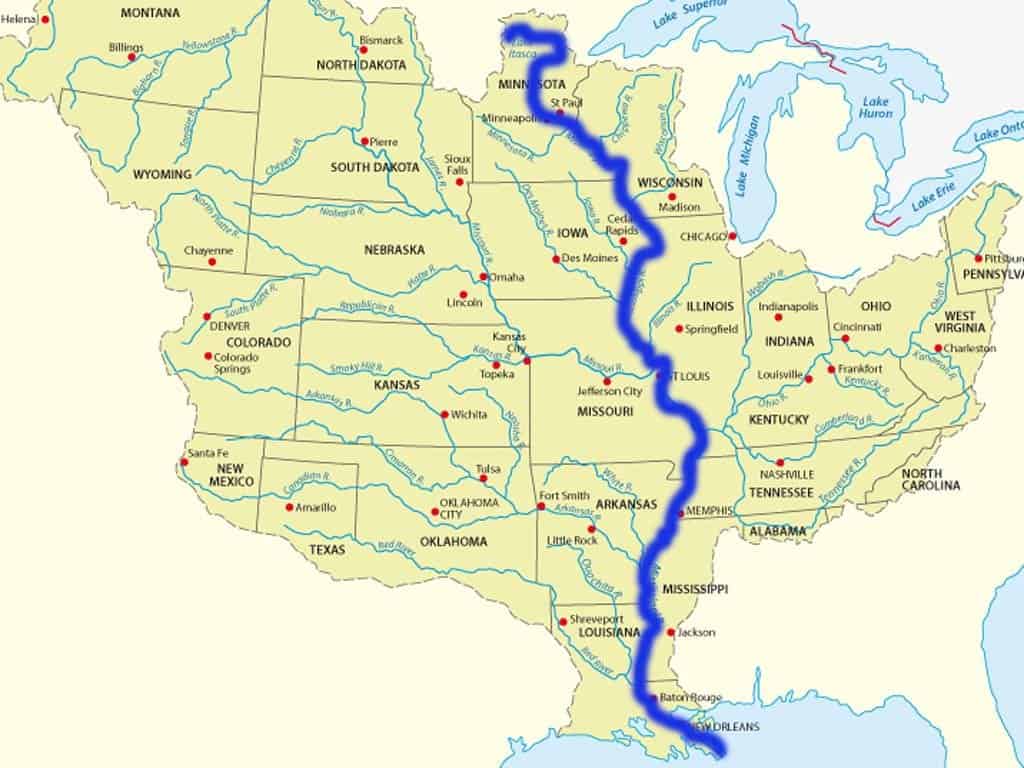
Fun Facts about the Mississippi River:
- The Mississippi River is home to a diverse array of wildlife, including over 300 species of fish, 40 species of mussels, and a variety of birds and reptiles.
- The river is known for its powerful current and sometimes unpredictable nature. The current of the Mississippi can reach up to 3 miles per hour in some places, and its waters have been known to rise or fall by as much as 40 feet in a single year.
- The Mississippi River has been the subject of many famous songs, stories, and legends, including Mark Twain’s classic novel “Adventures of Huckleberry Finn” and the folk song “Ol’ Man River.”
- The river has played a key role in the development of many musical styles, including blues, jazz, and rock and roll. Memphis, Tennessee, which sits on the banks of the Mississippi, is known as the “Home of the Blues.”
- The Mississippi River has had a significant impact on the economy of the United States, providing water transportation for agricultural and industrial goods. The river is a major component of the country’s transportation infrastructure and has been dubbed the “Mighty Mississippi” for its important role in moving goods and people throughout the country.
Also Read: https://worldofwebstories.com/exploring-the-worlds-most-incredible-places/
Follow us on Youtube
Follow us on Facebook
Follow us on Twitter
Follow us on Instagram
Also Read
15 Landmarks To Visit Before You Turn 65
Rainwater Harvesting: An Eco-Friendly Approach to Water Conservation
Tabora: Exploring the Heart of Tanzania
25 South Indian Food Near Me In USA: Where Tradition Meets Taste
Ear Troubles? Learn How to Get Water Out of Your Ear

